 August 28, 2020 Oroville Recreation Update The Potters Fire burned over 900 acres, including areas adjacent to Oroville Dam’s main and emergency spillways, the Spillway Boat Ramp area, and the Thermalito Diversion Pool.Visitors are advised to remain mindful of air quality and to stay away from fire-damaged areas. All Lake Oroville State Recreation Area (LOSRA) boat ramps, parking lots, and day use areas are open, including North and South Forebay facilities. The Oroville Dam Spillway Boat Ramp and day use area is open for use 5 a.m. to 11 p.m. daily. The nearby Potters Ravine trail complex experienced significant damage from the Potters Fire and will be closed through the winter for rehabilitation work. Affected trails on the south side of the Thermalito Diversion Pool, including the Dan Beebe and Lakeland trails are open for use. The Brad Freeman Trail on the north side of the Diversion Pool remains closed just before Morris Ravine. The Diversion Pool’s car-top boat launch is open. Information about and current status of Lake Oroville recreation facilities is available on the Department of Water Resources (DWR) Lake Oroville Recreation webpage and on the LOSRA webpage The Lake Oroville Visitors Center remains closed and boat-in, floating, and group campsites are not currently available to reduce the spread of COVID-19. For information about available State Parks camping, as well as COVID-19 public health requirements while recreating, visit www.parks.ca.gov/COVID19Camping. Bidwell Canyon Boat Ramp Work to Resume in September The Bidwell Canyon Boat Ramp Stage Two Improvement Project is scheduled to resume September 1, depending on Lake Oroville elevation. As lake levels decrease, construction will continue on a project that started in Fall 2018 to expand the Stage Two parking area and provide two additional Stage Two boat ramp lanes to 700 feet. Construction was halted in February 2019 due to rising lake levels. Kelly Ridge and Arroyo Drive residents can expect to see large construction equipment, as well as rock and concrete deliveries, in the area beginning early September from 7 a.m. to 7 p.m. weekdays as the contractor works to complete the project by mid-November. Work will not occur over the Labor Day weekend. Last year, the Stage Two project constructed a new lower-level, concrete parking lot, expanded Bidwell Canyon’s mid-level boat launch from three to five lanes and added two boarding float lanes. Construction also improved the vertical curve at the top of the boat ramp to accommodate larger trailers. Oroville Dam Citizens Advisory Commission Meeting Held by California Natural Resources Agency The California Natural Resources Agency’s (CNRA) virtual meeting of the fourth Oroville Dam Citizens Advisory Commission (CAC) on August 21 covered ongoing dam safety initiatives, including the Oroville Dam Safety Comprehensive Needs Assessment, and discussed planned improvements based on the study’s risk-assessment findings. DWR’s current and planned recreation improvement projects were highlighted and information about Lake Oroville State Recreation Area’s facilities was shared. The public was able to ask questions and make comments. The presentation slides are available on the CAC website and a video recording, transcript, and summary of the meeting will be added in the coming weeks. The Oroville Dam Citizens Advisory Commission, created by Senate Bill 955 (Nielsen) in 2018, established a public forum for discussing issues related to Oroville Dam facilities. The Commission, housed within CNRA, represents the communities surrounding Oroville Dam for the purposes of providing public input as well as receiving information from state agencies related to the Oroville Dam, its related structures, the Feather River Fish Hatchery, and the Oroville-Thermalito Complex. 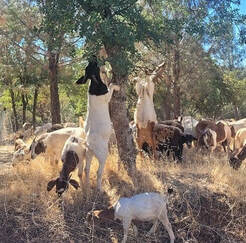 Oroville Area Algal Blooms Status DWR’s Oroville Field Division will wrap up recreational swim beach cyanotoxin monitoring next week. Monitoring for cyanotoxins at the Thermalito Forebay and Thermalito Afterbay occurs weekly from Memorial Day to Labor Day. DWR’s Environmental Scientists will continue to assess any reported algal blooms in these areas. At Lake Oroville, harmful algal blooms (HAB’s) continue to be present in many locations and DWR’s Environmental Scientists will continue to monitor these blooms until they dissipate. If elevated levels of cyanotoxins are found, staff will work with California’s Regional Water Quality Control Board and recreation area managers to notify the public and post advisory signs at the affected waterbody. At this time there are no advisories in place. How can you keep yourself, your family, and your pets safe from HAB’s? Visit the Water Board’s website and DWR’s digital article on the DWR Updates webpage. The public is encouraged to report algal blooms on the HAB reporting webpage. Learn all about Salmon Join us for Water Wednesdays at 1 p.m. on DWR’s YouTube channel and learn all about salmon over the next few weeks. These family-friendly programs are designed for kids 10 to 14 but are appropriate for anyone who would like to learn more about California’s water resources. The fall season began August 26 with a five-part look at the lifecycle of the Chinook salmon that spawn in the Feather River, travel downriver, through the Delta, and finally to the ocean. Interested participants can pre-register through Zoom which will allow them to ask real time questions of the speaker. Visit the DWR Events webpage at https://water.ca.gov/News/Events to join or register for next Wednesday’s chat. Information will also be posted on DWR’s social media pages at @CA_DWR (Twitter) and @CADWR (Facebook). Water Wednesdays began in May 2020 and previous episodes are available on DWR’s YouTube channel – enter Water Wednesdays in the search bar. Current Lake Operations The elevation of Oroville’s reservoir is about 753 feet and storage is about 1.7 million acre-feet. Daily average inflows to the lake have ranged between 1,588 cfs (cubic feet per second) to 2,437 over the past week. High temperatures will continue into the first week of September. The Northern Sierra Basin rainfall totals remains below average for the year, at 63 percent of normal. The total releases to Feather River are 2,100 cfs to meet downstream Bay-Delta water quality and flow standards. Flows through the City of Oroville are about 950 cfs and likely to be slightly reduced for fisheries purposes in early September. Flows from the Thermalito Afterbay Outlet (Outlet) are about 1,150 cfs for a total of 2,100 cfs for the Feather River’s high flow channel downstream of the Outlet. Throughout the week flows through the City of Oroville and the Outlet may fluctuate for fisheries purposes. All data as of midnight 8/27/2020 ### Know someone who would like to receive Community Updates? They can email their request to [email protected].  August 21, 2020 Potters Fire Impacts Area Around Oroville Dam The Potters Fire, part of the Butte Lightning Complex of fires ignited by lightning strikes in the early morning of Monday, August 17, started in Potters Ravine near Oroville Dam’s Spillway Boat Launch area. The fire has burned nearly 1,000 acres, including areas adjacent to Oroville Dam’s main and emergency spillways and the Thermalito Diversion Pool. The Department of Water Resources (DWR) continues to monitor the fire’s status and DWR operations are ongoing with essential staff on site. The fire did not damage Oroville Dam. The high voltage transmission lines that are used to provide generation to the California electrical grid have been assessed and show no signs of fire damage. DWR environmental staff are providing assessments of fire damage to vegetation and soils. Please see the Oroville Recreation section below for the current status of recreation facilities. Oroville Recreation Update The Potters Fire and smoke from other northern California fires have impacted area recreation. All Lake Oroville State Recreation Area (LOSRA) boat ramps, parking lots, and day use areas are open, including North and South Forebay facilities. Visitors are advised to be mindful of air quality and to stay away from fire-damaged areas. The Oroville Dam Spillway Boat Ramp and day use area, previously closed due to the Potters Fire, has reopened for use 5 a.m. to 11 p.m. daily. The nearby Potters Ravine trail complex experienced significant damage from the Potters Fire and will be closed indefinitely for rehabilitation work. Affected trails on the south side of the Thermalito Diversion Pool, including the Dan Beebe and Lakeland trails are open for use. The Brad Freeman Trail on the north side of the Diversion Pool, and Burma Road, remain closed as of August 21. Information about and current status of Lake Oroville recreation facilities is available on the DWR Lake Oroville Recreation webpage and on the LOSRA webpage. The Lake Oroville Visitors Center remains closed and floating campsites and group campsites are not currently available to reduce the spread of COVID-19. For information about available State Parks camping, as well as COVID-19 public health requirements while recreating, visit www.parks.ca.gov/COVID19Camping. Oroville Dam Citizens Advisory Commission Meeting Held by California Natural Resources Agency The California Natural Resources Agency (CNRA), in accordance with Governor Newsom’s directives and to protect public health during the COVID-19 pandemic, held the fourth Oroville Dam Citizens Advisory Commission (CAC) meeting virtually on August 21 from 10 a.m. to noon. The meeting covered ongoing dam safety initiatives, including the Oroville Dam Safety Comprehensive Needs Assessment, and discussed planned improvements based on the study’s risk-assessment findings. DWR’s current and planned recreation improvement projects were highlighted and information about Lake Oroville State Recreation Area’s facilities was shared. The public was able to ask questions and make comments. The presentation slides are available on the CAC website and a video recording, transcript, and summary of the meeting will be added in the coming weeks. The Oroville Dam Citizens Advisory Commission, created by Senate Bill 955 (Nielsen) in 2018, established a public forum for discussing issues related to Oroville Dam facilities. The Commission, housed within CNRA, represents the communities surrounding Oroville Dam for the purposes of providing public input as well as receiving information from state agencies related to the Oroville Dam, its related structures, the Feather River Fish Hatchery, and the Oroville-Thermalito Complex. Postponed - PG&E Work to Close West Branch of Lake Oroville Utility work by Pacific Gas and Electric (PG&E) previously scheduled for Friday, August 21 on the West Branch of the Feather River at Lake Oroville – affecting boat traffic in the area – has been postponed. The work to remove conductors from transmission lines extending over the West Branch waterway near where it joins the Feather River’s North Fork of Lake Oroville is anticipated to be rescheduled later in August.  Grebes Nest Receive Help from DWR Western and Clark’s grebes, with their distinctive red eyes, graceful necks and long yellow bills, have returned to the Thermalito Afterbay for their nesting season. The shallow nature of the Afterbay is perfect for these two species of grebes who, along with only a few other aquatic bird species, nest on the water. DWR voluntarily restricts the elevation of the Thermalito Afterbay because significant decreases in reservoir elevation could strand the nests out of the water or submerge them if elevations increase. Find more information about the grebes at the DWR Updates webpage. Photos can be found on DWR’s Pixel webpage – enter Grebes in the search bar after creating a user name and password to log in.  Oroville Area Algal Blooms Status DWR environmental scientists regularly monitor Lake Oroville, the Thermalito North Forebay, and the Thermalito Afterbay for cyanobacteria (blue-green algae) and their toxins. There are currently no Harmful Algal Bloom (HAB) advisories for Lake Oroville, the Thermalito Forebay, or the Thermalito Afterbay. Algal blooms continue to be present in many locations around Lake Oroville. Lab analysis of water samples from these water bodies continues to find minimal or no amounts of cyanobacteria in the algae. Sampling continues weekly and if elevated levels of cyanobacteria or toxins are found, DWR staff will work with California’s Regional Water Quality Control Board and recreation area managers to notify the public and post advisory signs at the affected waterbody. Non-toxic algal blooms can be irritating or even dangerous to pets and small children. To learn more about HABs, visit the Water Board’s website and DWR’s digital article on the DWR Updates webpage. The public is encouraged to report algal blooms on the HAB reporting webpage Online Water Education Program Returns to the DWR YouTube Channel Join us for Water Wednesdays at 1 p.m. on DWR’s YouTube channel and learn all about salmon over the next few weeks. These family-friendly programs are designed for kids 10 to 14 but are appropriate for anyone who would like to learn more about California’s water resources. We’re kicking off the fall season with a five-part look at the lifecycle of the Chinook salmon that spawn in the Feather River, travel downriver, through the Delta, and finally to the ocean. Interested participants can pre-register through Zoom which will allow them to ask real time questions of the speaker. Visit the DWR Events webpage at https://water.ca.gov/News/Events to join or register for next Wednesday’s chat. Information will also be posted on DWR’s social media pages at @CA_DWR (Twitter) and @CADWR (Facebook). Water Wednesdays began in May 2020 and previous episodes are available on DWR’s YouTube channel – enter Water Wednesdays in the search bar. Current Lake Operations The elevation of Oroville’s reservoir is about 756 feet and storage is about 1.73 million acre-feet. Daily average inflows to the lake have ranged between 1,485 cfs (cubic feet per second) to 2,462 over the past week. High temperatures will continue into the week of August 24. The Northern Sierra Basin rainfall totals remains below average for the year, at 63 percent of normal. The total releases to Feather River are 2,300 cfs to meet downstream Bay-Delta water quality and flow standards. Flows through the City of Oroville are about 950 cfs. Flows from the Thermalito Afterbay Outlet (Outlet) are about 1,350 cfs for a total of 2,300 cfs for the Feather River’s high flow channel downstream of the Outlet. Throughout the week flows through the City of Oroville and the Outlet may fluctuate for fisheries purposes. Additionally, in response to energy demands from the recent heat wave, DWR increased power generation from Hyatt Power Plant by increasing Feather River releases by 500 cfs August 18-20. Flows return to 2,300 on August 21. All data as of midnight 8/20/2020 ### Know someone who would like to receive Community Updates? They can email their request to [email protected].  August 14, 2020 California Natural Resources Agency to Host Oroville Dam Citizens Advisory Commission Public Meeting The California Natural Resources Agency (CNRA), in accordance with Governor Newsom’s directives and to protect public health during the COVID-19 pandemic, is hosting the fourth Oroville Dam Citizens Advisory Commission (CAC) meeting virtually on Friday, August 21 from 10 a.m. to noon. The meeting’s agenda will focus on ongoing dam safety initiatives and current recreation access as well as planned improvements; there will also be an opportunity for members of the public to ask questions and make comments. Persons interested in participating are directed to the CAC’s website for information on how to join the meeting. Links to meeting materials will be posted on the CAC website the week of August 17. The Oroville Dam Citizens Advisory Commission, created by Senate Bill 955 (Nielsen) in 2018, established a new public forum for discussing issues related to Oroville Dam facilities. The Commission, housed within CNRA, represents the communities surrounding Oroville Dam for the purposes of providing public input as well as receiving information from state agencies related to the Oroville Dam, its related structures, the Feather River Fish Hatchery, and the Oroville-Thermalito Complex. PG&E Work to Close West Branch of Lake Oroville Utility work by Pacific Gas and Electric (PG&E) on the West Branch of the Feather River at Lake Oroville will require intermittent closure of boating from 6:30 a.m. to 1 p.m. Friday, August 21. PG&E crews will be removing conductors from transmission lines extending over the West Branch waterway near where it joins the Feather River’s North Fork of Lake Oroville. Boat traffic will not be permitted to cross under the transmission lines until they can be safely escorted through by traffic control boats identified by flashing lights. Boaters in the Lime Saddle Marina area and those entering the West Branch are advised to prepare for temporary delays. The waterway is anticipated to reopen by 1 p.m.  Oroville Recreation Update Lake Oroville and the North and South Forebay boat ramps, parking lots, and day use areas are open. Except for the Oroville Dam Spillway Boat Ramp area, which is open 5 a.m. to 11 p.m. daily, Lake Oroville State Recreation Area (LOSRA) boat ramps are open 24 hours a day, seven days a week. Trails and day use areas are open from 8 a.m. to sunset. Floating campsites and group campsites are not currently available to reduce the spread of COVID-19. For information about State Parks camping, as well as COVID-19 public health requirements while recreating, visit www.parks.ca.gov/COVID19Camping. The Oroville Wildlife Area (OWA), including the Thermalito Afterbay, is open 1.5 hours before sunrise to one hour after sunset and offers miles of trails and wildlife viewing. The Forebay Aquatic Center at the North Forebay Recreation Area is open Friday through Sunday 10 a.m. to 7 p.m. for boat, kayak, and other aquatic equipment rentals. Information and an interactive map of Lake Oroville and OWA recreation facilities is available on the Department of Water Resources (DWR) Lake Oroville Recreation webpage. The Lake Oroville Visitors Center remains closed due to COVID-19. 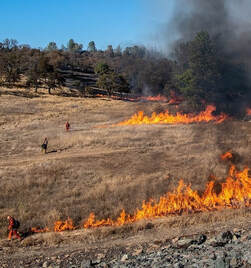 Grebes Nest Receive Help from DWR Western and Clark’s grebes, with their distinctive red eyes, graceful necks and long yellow bills, have returned to the Thermalito Afterbay for their nesting season. The shallow nature of the Afterbay is perfect for these two species of grebes who, along with only a few other aquatic bird species, actually nest on the water. DWR voluntarily restricts the elevation of the Thermalito Afterbay because significant decreases in reservoir elevation could strand the nests out of the water or submerge them if elevations increase. Find more information about the grebes at the DWR Updates webpage. Photos can be found on DWR’s Pixel webpage – enter Grebes in the search bar after creating a user name and password to log in.  Oroville Area Algal Blooms Status DWR environmental scientists regularly monitor Lake Oroville, the Thermalito North Forebay, and the Thermalito Afterbay for cyanobacteria (blue-green algae) and their toxins. There are currently no Harmful Algal Bloom (HAB) advisories for Lake Oroville, the Thermalito Forebay, or the Thermalito Afterbay. Algal blooms continue to be present in many locations around Lake Oroville. Lab analysis of water samples from these water bodies continues to find minimal or no amounts of cyanobacteria in the algae. Sampling continues weekly and if elevated levels of cyanobacteria or toxins are found, DWR staff will work with California’s Regional Water Quality Control Board and recreation area managers to notify the public and post advisory signs at the affected waterbody. Non-toxic algal blooms can be irritating or even dangerous to pets and small children. To learn more about HABs, visit the Water Board’s website and DWR’s digital article on the DWR Updates webpage. The public is encouraged to report algal blooms on the HAB reporting webpage. DWR Water Education Program Educates Youth Online This Summer Missing Summer Camp? Join DWR’s virtual Summer Camp. DWR Staff will be providing fun activities relating to DWR’s recent Water Wednesday’s videos. The family-friendly programs are designed for kids 10 to 14 but are appropriate for anyone who would like to learn more about California’s water resources. Each video is available on DWR’s YouTube channel and a listing of all the program’s episodes can be found by clicking the Playlists tab. Activity suggestions and information can be found in the video’s comment section as they are added each week. Current Lake Operations The elevation of Oroville’s reservoir is about 760 feet and storage is about 1.77 million acre-feet. Daily average inflows to the lake have ranged between 1,365 cfs (cubic feet per second) to 2,025 over the past week. An excessive heat watch is in effect this weekend through Sunday evening and high temperatures will continue into the week of August 17. The Northern Sierra Basin rainfall totals remains below average for the year, at 63 percent of normal. The total releases to Feather River are 2,300 cfs to meet downstream Bay-Delta water quality and flow standards. Flows through the City of Oroville are about 1,550 cfs. Flows from the Thermalito Afterbay Outlet (Outlet) are about 750 cfs for a total of 2,300 cfs for the Feather River’s high flow channel downstream of the Outlet. Throughout the week flows through the City of Oroville and the Outlet may fluctuate for fisheries purposes. All data as of midnight 8/13/2020 ### Know someone who would like to receive Community Updates? They can email their request to [email protected]. 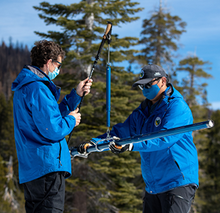 August 7, 2020 California Natural Resources Agency to Host Oroville Dam Citizens Advisory Commission Public Meeting The California Natural Resources Agency (CNRA), in accordance with Governor Newsom’s directives and to protect public health during the COVID-19 pandemic, is hosting the fourth Oroville Dam Citizens Advisory Commission (CAC) meeting virtually on Friday, August 21 from 10 a.m. to noon. The meeting’s agenda will focus on ongoing dam safety initiatives and current recreation access as well as planned improvements; there will also be an opportunity for members of the public to ask questions and make comments. Persons interested in participating are directed to the CAC’s website for information on how to join the meeting. Instructions and links to the planned webinar will be posted on the CAC website the week of August 17. The Oroville Dam Citizens Advisory Commission, created by Senate Bill 955 (Nielsen) in 2018, established a new public forum for discussing issues related to Oroville Dam facilities. The Commission, housed within CNRA, represents the communities surrounding Oroville Dam for the purposes of providing public input as well as receiving information from state agencies related to the Oroville Dam, its related structures, the Feather River Fish Hatchery, and the Oroville-Thermalito Complex. Oroville Recreation Update Lake Oroville and the North and South Forebay boat ramps, parking lots, and day use areas are open. Except for the Oroville Dam Spillway Boat Ramp area, which is open 5 a.m. to 11 p.m. daily, Lake Oroville State Recreation Area (LOSRA) boat ramps are open 24 hours a day, seven days a week. Trails and day use areas are open from 8 a.m. to sunset. Floating campsites and group campsites are not currently available to reduce the spread of COVID-19. For information about State Parks camping, as well as COVID-19 public health requirements while recreating, visit www.parks.ca.gov/COVID19Camping. The Oroville Wildlife Area (OWA), including the Thermalito Afterbay, is open 1.5 hours before sunrise to one hour after sunset and offers miles of trails and wildlife viewing. The Forebay Aquatic Center at the North Forebay Recreation Area is open Friday through Sunday 10 a.m. to 7 p.m. for boat, kayak, and other aquatic equipment rentals. Information and an interactive map of Lake Oroville and OWA recreation facilities is available on the Department of Water Resources (DWR) Lake Oroville Recreation webpage. The Lake Oroville Visitors Center remains closed due to COVID-19. Temporary Closure of Dan Beebe Trail The portion of the Dan Beebe Trail between the Lake Oroville Visitors Center and the Oroville Dam Upper Overlook will be closed from 7 a.m. to 5 p.m. on Tuesday, August 11 for excavation work. Signage to notify the public of the closure will be placed at the trail’s access points near the Visitors Center and the Upper Overlook. Installation of Piezometers at Oroville Dam DWR continues installation of four new piezometers at the headworks of Oroville Dam’s main, or flood control outlet (FCO), spillway. The piezometers will collect data from the FCO foundation. The data will be used to confirm drain performance, inform on-going structural modeling and analyses, and inform future improvements to the structure. The work is expected to be completed by August 21. Water used in the drilling process will be visible as it flows down the spillway. This work is part of early implementation of the Oroville Dam Safety Comprehensive Needs Assessment (CNA), which is focused on identifying priorities and appropriate solutions to bolster the integrity and resiliency of the Oroville Dam complex to ensure public safety. A number of piezometers were originally installed in the dam fifty years ago which, as anticipated, have since stopped functioning. DWR continues its work to install additional instrumentation throughout the facility including eight new piezometers installed earlier this year at the base of Oroville Dam. 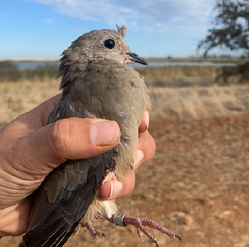 Oroville Area Algal Blooms Status DWR environmental scientists regularly monitor Lake Oroville, the Thermalito North Forebay, and the Thermalito Afterbay for cyanobacteria (blue-green algae) and their toxins. There are currently no Harmful Algal Bloom (HAB) advisories for Lake Oroville, the Thermalito Forebay, or the Thermalito Afterbay. Algal blooms continue to be present in the West Branch and the North Fork of Lake Oroville. Lab analysis of water samples from these water bodies continues to find minimal or no amounts of cyanobacteria in the algae. Sampling continues weekly and if elevated levels of cyanobacteria or toxins are found, DWR staff will work with California’s Regional Water Quality Control Board and recreation area managers to notify the public and post advisory signs at the affected waterbody. Non-toxic algal blooms can be irritating or even dangerous to pets and small children. To learn more about HABs, visit the Water Board’s website and DWR’s digital article on the DWR Updates webpage. The public is encouraged to report algal blooms on the HAB reporting webpage. DWR Water Education Program Educates Youth Online This Summer Missing Summer Camp? Join DWR’s virtual Summer Camp. DWR Staff will be providing fun activities relating to DWR’s recent Water Wednesday’s videos. The family-friendly programs are designed for kids 10 to 14 but are appropriate for anyone who would like to learn more about California’s water resources. Each video is available on DWR’s YouTube channel and a listing of all the program’s episodes can be found by clicking the Playlists tab. Activity suggestions and information can be found in the video’s comment section as they are added each week. Current Lake Operations The elevation of Oroville’s reservoir is about 765 feet and storage is about 1.82 million acre-feet. Daily average inflows to the lake have ranged between 859 cfs (cubic feet per second) to 1,993 over the past week. Dry conditions and warm temperatures continue this weekend and into the week of August 10. The Northern Sierra Basin rainfall totals remains below average for the year, at 63 percent of normal. The total releases to Feather River are 2,300 cfs to meet downstream Bay-Delta water quality and flow standards. Flows through the City of Oroville are at 1,550 cfs. Flows from the Thermalito Afterbay Outlet (Outlet) are about 750 cfs for a total of 2,300 cfs for the Feather River’s high flow channel downstream of the Outlet. Throughout the week flows through the City of Oroville and the Outlet may fluctuate for fisheries purposes. All data as of midnight 8/6/2020 ### Know someone who would like to receive Community Updates? They can email their request to [email protected]. July 31, 2020
Oroville Recreation Update Lake Oroville and the North and South Forebay boat ramps, parking lots, and day use areas are open. Except for the Oroville Dam Spillway Boat Ramp area, which is open 5 a.m. to 11 p.m. daily, Lake Oroville State Recreation Area (LOSRA) boat ramps are open 24 hours a day, seven days a week. Trails and day use areas are open from 8 a.m. to sunset. Floating campsites and group campsites are not currently available to reduce the spread of COVID-19. For information about State Parks camping, as well as COVID-19 public health requirements while recreating, visit www.parks.ca.gov/COVID19Camping. The Oroville Wildlife Area (OWA), including the Thermalito Afterbay, is open 1.5 hours before sunrise to one hour after sunset and offers miles of trails and wildlife viewing. The Forebay Aquatic Center at the North Forebay Recreation Area is open Friday through Sunday 10 a.m. to 7 p.m. for boat, kayak, and other aquatic equipment rentals. Information and an interactive map of Lake Oroville and OWA recreation facilities is available on the Department of Water Resources (DWR) Lake Oroville Recreation webpage. The Lake Oroville Visitors Center remains closed due to COVID-19. Installation of Piezometers at Oroville Dam DWR will begin installation of four new piezometers at the headworks of Oroville Dam’s main, or flood control outlet (FCO), spillway on August 3. The piezometers will collect data from the FCO foundation. The data will be used to confirm drain performance, inform on-going structural modeling and analyses, and inform future improvements to the structure. The work is expected to be completed by August 21. This work is part of early implementation of the Oroville Dam Safety Comprehensive Needs Assessment (CNA), which is focused on identifying priorities and appropriate solutions to bolster the integrity and resiliency of the Oroville Dam complex to ensure public safety. A number of piezometers were originally installed in the dam fifty years ago which, as anticipated, have since stopped functioning. DWR continues its work to install additional instrumentation throughout the facility including eight new piezometers installed earlier this year at the base of Oroville Dam. Trails at Oroville Facility Offer a Variety of Scenery The Oroville Facility Trail system features 91 miles of trails, with access to Lake Oroville, Thermalito Diversion Pool, Thermalito Afterbay, and Thermalito Forebay. Pedestrians, hikers, bikers, and equestrians can take advantage of an array of single track, fire roads, and paved trails which border beautiful natural areas, provide stunning views, and allow plentiful opportunities for wildlife viewing. Trail users can seasonally view salmon, grebes, loons, waterfowl, bald eagles, turkey vultures, snakes, frogs, and more throughout the trail network. Find area trails and their use restrictions by viewing the interactive map on the Lake Oroville Recreation webpage. Oroville Area Algal Blooms Status DWR environmental scientists regularly monitor Lake Oroville, the Thermalito North Forebay, and the Thermalito Afterbay for cyanobacteria (blue-green algae) and their toxins. There are currently no Harmful Algal Bloom (HAB) advisories for Lake Oroville, the Thermalito Forebay, or the Thermalito Afterbay. Algal blooms continue to be present in the West Branch and the North Fork of Lake Oroville. Lab analysis of water samples from these water bodies continues to find minimal or no amounts of cyanobacteria in the algae. Sampling continues weekly and if elevated levels of cyanobacteria or toxins are found, DWR staff will work with California’s Regional Water Quality Control Board and recreation area managers to notify the public and post advisory signs at the affected waterbody. Non-toxic algal blooms can be irritating or even dangerous to pets and small children. To learn more about HABs, visit the Water Board’s website and DWR’s digital article on the DWR Updates webpage. The public is encouraged to report algal blooms on the HAB reporting webpage. DWR Water Education Program Educates Youth Online This Summer Missing Summer Camp? Join DWR’s virtual Summer Camp. DWR Staff will be providing fun activities relating to DWR’s recent Water Wednesday’s videos. The family-friendly programs are designed for kids 10 to 14 but are appropriate for anyone who would like to learn more about California’s water resources. Each video is available on DWR’s YouTube channel and a listing of all the program’s episodes can be found by clicking the Playlists tab. Activity suggestions and information can be found in the video’s comment section as they are added each week. Current Lake Operations The elevation of Oroville’s reservoir is about 771 feet and storage is about 1.88 million acre-feet. Daily average inflows to the lake have ranged between 1,248 cfs (cubic feet per second) to 2,621 over the past week. Dry conditions and warm temperatures continue this weekend and into the week of August 3. The Northern Sierra Basin rainfall totals remains below average for the year, at 63 percent of normal. The total releases to Feather River are 2,700 cfs to meet downstream Bay-Delta water quality and flow standards. Flows through the City of Oroville are at 1,550 cfs. Flows from the Thermalito Afterbay Outlet (Outlet) are about 1,150 cfs for a total of 2,700 cfs for the Feather River’s high flow channel downstream of the Outlet. Throughout the week flows through the City of Oroville and the Outlet may fluctuate for fisheries purposes. All data as of midnight 7/30/2020 ### Know someone who would like to receive Community Updates? They can email their request to [email protected] |
Archives
October 2023
Categories
All
|


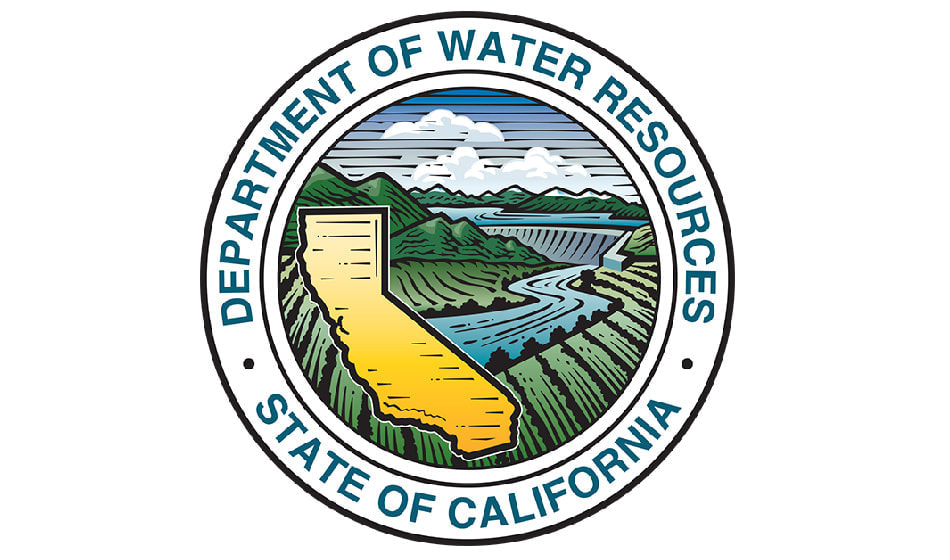
 RSS Feed
RSS Feed